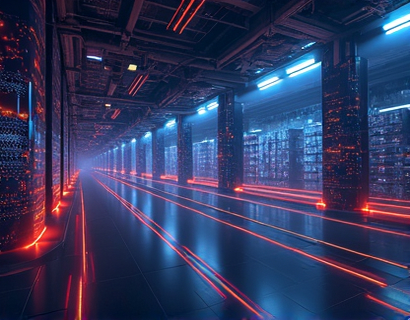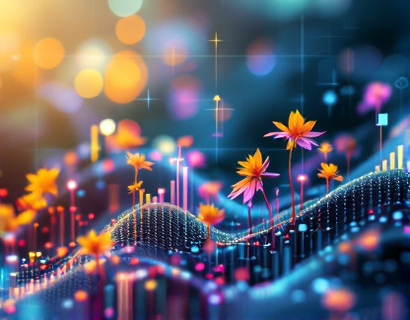Revolutionizing Aquaculture Businesses: The Power of Advanced Software Solutions
In the rapidly evolving world of aquaculture, business owners and managers face numerous challenges that can impact the success and sustainability of their operations. From managing complex supply chains to optimizing resource usage and ensuring compliance with regulatory standards, the demands are multifaceted. Advanced software solutions have emerged as a game-changer, offering a comprehensive toolkit to streamline operations, boost productivity, and enhance overall efficiency. This article delves into the critical role of aquaculture software solutions, exploring how they can transform the way businesses operate and thrive in a competitive market.
Understanding the Importance of Software in Aquaculture
The aquaculture industry, like many others, is data-driven. Effective management relies heavily on accurate data collection, analysis, and utilization. Software solutions designed for aquaculture provide the necessary tools to capture, process, and interpret data efficiently. These tools help in monitoring various aspects of the business, from water quality parameters to feed consumption and fish health. By automating routine tasks and providing real-time insights, software enables aquaculture professionals to make informed decisions swiftly, reducing the risk of errors and optimizing resource allocation.
Key Features of Advanced Aquaculture Software
Advanced aquaculture software solutions come packed with features tailored to meet the specific needs of the industry. Some of the essential functionalities include:
- Real-time monitoring of environmental parameters such as temperature, pH, and dissolved oxygen
- Automated feed management systems to optimize feeding schedules and reduce waste
- Inventory management tools to track stock levels and supply chain logistics
- Health monitoring and disease management systems to ensure fish welfare and minimize losses
- Reporting and analytics modules to generate comprehensive reports and key performance indicators
- Integration capabilities with other systems like ERP and CRM for seamless operation
These features collectively contribute to a more efficient and effective management of aquaculture operations, enabling businesses to operate at peak performance.
Streamlining Operations with Automation
One of the most significant benefits of adopting advanced software solutions in aquaculture is the automation of routine tasks. Manual processes, which are prone to human error and inefficiency, can be significantly reduced. For instance, automated feed management systems ensure that fish receive the right amount of feed at the right times, based on factors like water temperature and fish size. This not only optimizes feed usage but also promotes healthier growth conditions for the fish.
Similarly, real-time monitoring of environmental parameters allows for immediate adjustments to maintain optimal conditions. Sensors and IoT devices continuously collect data, which is then analyzed and acted upon automatically. This proactive approach helps in preventing issues before they escalate, reducing downtime and potential losses.
Enhancing Productivity through Data-Driven Insights
Data is the backbone of any successful business, and in aquaculture, it plays a crucial role in decision-making. Advanced software solutions provide robust data management and analytics capabilities, enabling owners and managers to gain deep insights into various aspects of their operations. For example, by analyzing growth rates, feed conversion ratios, and health metrics, businesses can identify trends and patterns that inform strategic decisions.
Moreover, these insights can be used to optimize breeding programs, improve feed formulations, and enhance overall farm management. The ability to access and interpret data quickly and accurately empowers aquaculture professionals to make data-driven decisions, leading to increased productivity and profitability.
Optimizing Resource Management
Resource optimization is a critical aspect of sustainable aquaculture. Advanced software solutions help in managing resources more efficiently, reducing waste, and lowering operational costs. Inventory management tools track stock levels of feed, equipment, and other supplies, ensuring that nothing goes to waste and that reorders are placed at the optimal time.
Water quality management is another area where software can make a significant impact. By continuously monitoring parameters like oxygen levels, pH, and ammonia levels, the system can alert managers to any deviations from the ideal range. This allows for timely interventions to maintain water quality, which is essential for the health and growth of the fish.
Additionally, energy management features can help in monitoring and optimizing the use of electricity, reducing energy consumption and associated costs. This not only benefits the bottom line but also contributes to environmental sustainability.
Ensuring Compliance and Regulatory Adherence
Compliance with local, national, and international regulations is a mandatory requirement for aquaculture businesses. Advanced software solutions can help in maintaining compliance by providing tools to track and manage regulatory requirements. For instance, the software can generate reports on water quality, chemical usage, and waste management, which are often necessary for regulatory inspections.
Moreover, some software solutions include modules that alert managers to upcoming regulatory deadlines and required documentation, ensuring that nothing is overlooked. This proactive approach helps in avoiding fines and penalties, thereby protecting the business from potential legal issues.
Improving Fish Health and Welfare
Fish health is paramount in aquaculture, as it directly impacts production efficiency and profitability. Advanced software solutions offer comprehensive health monitoring and disease management systems. These systems track the health status of fish, monitor for signs of disease, and provide recommendations for treatment.
By integrating data from various sources, such as water quality sensors and feeding systems, the software can identify potential health risks before they become critical issues. Early detection and intervention can significantly reduce the incidence of diseases, leading to healthier fish and higher yields.
Furthermore, some software solutions include features for managing vaccination schedules and treatment protocols, ensuring that fish receive the necessary care and attention. This holistic approach to fish health not only improves welfare but also enhances the overall quality and market value of the produce.
Scalability and Flexibility
As aquaculture businesses grow, their software needs evolve. Advanced solutions are designed to be scalable and flexible, accommodating the changing requirements of the business. Whether it's expanding to new locations, increasing production capacity, or diversifying product lines, the software can adapt to meet these challenges.
Cloud-based solutions, in particular, offer the advantage of scalability without the need for significant upfront investments in hardware. Businesses can easily upgrade their software as needed, ensuring they always have access to the latest features and functionalities.
User-Friendly Interfaces and Training Support
For software to be truly effective, it must be user-friendly and easy to navigate. Advanced aquaculture software solutions are designed with intuitive interfaces that require minimal training. This is crucial for businesses with staff who may not have extensive technical backgrounds.
Most providers offer comprehensive training and support services to help users get the most out of the software. This includes on-site training sessions, online tutorials, and dedicated customer support to address any questions or issues that may arise. By ensuring that staff are well-versed in using the software, businesses can maximize its benefits and operational efficiency.
Case Studies and Success Stories
To better understand the impact of advanced software solutions in aquaculture, let's look at a few success stories. One notable example is a large-scale salmon farm that implemented a comprehensive software system to manage its operations. Prior to the implementation, the farm faced challenges with inconsistent feed management and sporadic water quality issues, leading to variable fish growth and occasional health outbreaks.
After integrating the software, the farm saw a significant improvement in feed efficiency, with a reduction of 15% in feed waste. The real-time monitoring of water parameters led to a 20% decrease in water quality-related health issues. Additionally, the automated reporting and analytics tools provided valuable insights that helped in optimizing breeding programs, resulting in a 10% increase in production yields.
Another example is a smaller, family-owned trout farm that struggled with inventory management and regulatory compliance. By adopting an advanced software solution, the farm was able to streamline its inventory processes, reducing stockouts and overstock situations. The compliance module ensured that all necessary reports were generated on time, avoiding potential fines and enhancing the farm's reputation in the market.
These case studies demonstrate the tangible benefits of adopting advanced software solutions in aquaculture, from improved efficiency and productivity to better compliance and higher profits.
Future Trends in Aquaculture Software
The aquaculture software industry is continually evolving, driven by technological advancements and the growing demand for sustainable and efficient practices. Some of the emerging trends include:
- Integration with artificial intelligence and machine learning for predictive analytics and automated decision-making
- Enhanced use of IoT devices for more granular and precise monitoring
- Increased focus on sustainability metrics and carbon footprint tracking
- Development of mobile applications for on-the-go access to critical data and controls
- Greater emphasis on cybersecurity to protect sensitive business data
These advancements promise to further revolutionize the way aquaculture businesses operate, making them more intelligent, sustainable, and resilient.
Conclusion
In conclusion, advanced software solutions have become an indispensable tool for aquaculture businesses looking to streamline operations, enhance productivity, and optimize resource management. By leveraging these technologies, businesses can gain a competitive edge, ensure compliance, and improve overall sustainability. As the industry continues to grow and evolve, the role of software will only become more critical, paving the way for a more efficient and prosperous future in aquaculture.










































